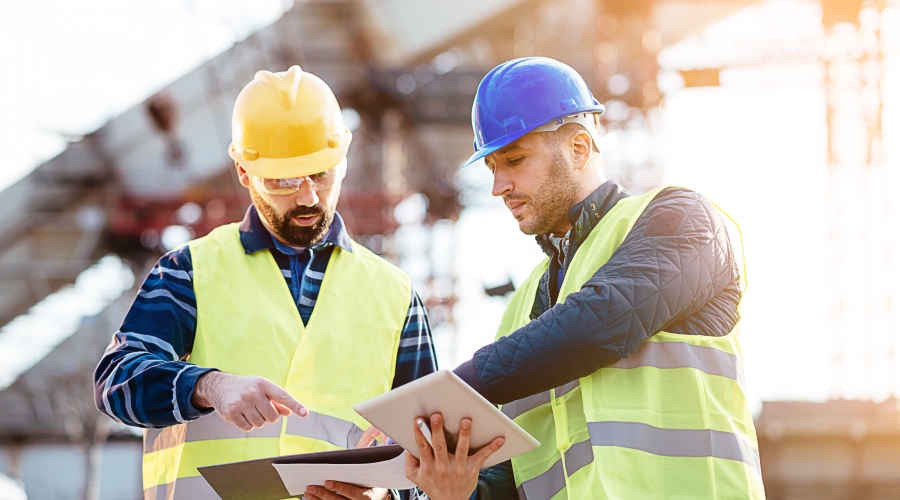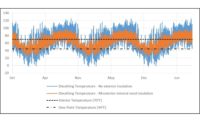Throughout February of 2023, headlines around the world chronicled the damage caused by a pair of devastating 7.8 and 7.5 magnitude earthquakes in Turkey. The earthquakes were—and still are—the deadliest in Turkey’s history, killing over 44,000 citizens and incurring an estimated $34.2 billion in direct physical damage. And that cost estimate doesn’t include long-term reconstruction and recovery costs, which the World Bank estimates could be twice as high.
As Turkey picked up the pieces in the weeks following the tragic event, the resurfacing of 2019 campaign footage caused many to point fingers at Turkish President Recep Tayyip Erdogan for allowing builders to surpass building codes at scale. In an effort to speed up construction and cut costs, Erdogan had created amnesties allowing contractors to ignore critical safety regulations specifically designed to make apartment blocks, homes, and commercial buildings more resistant to earthquakes. These amnesties helped hasten the construction of large housing projects in the city of Maras and Hatay province, among other locations. In Gaziantep province, which was hit particularly hard by the earthquakes, the government granted more than 40,000 amnesty certificates by 2018. Engineers and architects believe this led to a lack of seismic integrity and stability, which likely contributed to Turkey’s high death toll.
Turkey serves as just one of many examples underscoring the absolute criticality of prioritizing structural resiliency via building codes—especially given the fact that natural disasters have increased tenfold since the 1960s. Today, many events that were once considered outliers have become more commonplace.
As natural disasters continue to impact communities all around the world, it’s crucial that buildings are able to withstand unpredictable environments. Inspections will only become more relevant and constant over the next several years as communities respond to the dire consequences of lax building safety protocols. But we shouldn’t wait until disaster strikes and inspection requirements heighten to fortify our structures. Recent natural disasters remind us of the power of prioritizing resilient buildings: building codes and standards helped largely spare the town of Punta Gorda, Florida from Hurricane Ian’s destruction in September 2022, for example.
The Importance of Codes and Standards Built for Resiliency
A nationwide study of loss prevention from the Federal Emergency Management Agency (FEMA) found that modern building codes lead to major reduction in property losses from natural disasters. In fact, it is predicted that by 2040, the U.S. will have avoided over $132 billion in loses as a result of using modern codes—and there remains significant opportunity to improve that number.
Building codes are designed to generate big benefits at reasonable cost—which makes skimping out on them for the sake of speed and short-term cost effectiveness even more baseless (and risky). The building codes are constructed to factor in inherent risks and make buildings safe at all times. To best take advantage of the codes and standards’ value and fortify structures against disaster, key digital tools and proactive measures can help. Below are three tips on leveraging these strategies to reduce catastrophe:
Consider Building to the Latest Editions of the Code
The FEMA study found that 65% of counties, cities, and towns across the U.S. today have not implemented modern building codes. When constructing or renovating a building, organizations should consider following the most up-to-date edition of the codes and standards, or at the very least, knowing what they entail. For example, although your jurisdiction may only mandate building to the 2014 edition of a code, it’s helpful to also evaluate updated information in the 2023 edition of that code. Each new edition incorporates valuable lessons learned and the latest technologies and information, meaning the 2023 edition will have an additional nine years of knowledge and improvements meant to increase the safety and resiliency of a building.
Emerging digital tools can help fire and life safety professionals not only access latest editions of the code, but also easily spot changes. Digitized codes and standards applications not only update new editions and changes in real-time, but they can also flag those changes with interactive change markers to ensure nothing goes unnoticed. This helps teams know any requirements that may have changed between code editions and understand what building aspects need to be modified. As a bonus, sections of code can be easily shared among team members with collaboration capabilities.
Take the All-Hazards Approach
An all-hazards approach is crucial when constructing buildings resilient to natural (or manmade) disasters. The term "all-hazards" refers to looking at all possible risks that could affect a building—from bombs to hurricanes, tornadoes, earthquakes, train derailments, and more—identifying the most likely hazards, and then taking steps to mitigate the impact of those hazards. For example, if a building is in an area that could experience a hurricane, earthquake, or tornado, an all-hazards approach will address the wind and flooding likely to occur in those scenarios. By taking a holistic approach and focusing on common hazards between multiple types of events, building teams can more effectively and proactively mitigate against them and reduce loss. More details on this approach are outlined in NFPA 1600 ®, Standard on Continuity, Emergency, and Crisis Management ®.
Proactively Invest in Your ITM and Emergency Response Ecosystem
On June 24, 2021, an entire condominium in Surfside, Florida collapsed, garnering national media attention. In the weeks following the deadly event, Florida lawmakers proposed a new condo inspection law requiring that any residential complex 30 years or older be inspected for structural integrity immediately and every 10 years thereafter. This bill came nearly 30 years after the devastation of Hurricane Andrew forced Florida to address relaxed building code implementation and inadequate inspections.
While this marks positive momentum, it shouldn’t take a tragedy for us to start prioritizing building codes and inspections. Resiliency should be proactive, not reactive. That means it’s critical to invest in ongoing inspection, testing, and maintenance (ITM)—whether it's by regularly engaging high-quality contractors or internally training and equipping skilled staff to handle these tasks responsibly.
This speaks to the larger emergency response ecosystem. Resiliency in the face of disaster isn’t only about codes and standards, but about continuous ITM, planned response, and education. Do people know what to do during a disaster and how to respond? Do we have a skilled workforce and an educated public? Have we created a response plan with local first responders? Who will we engage in the cleanup and recovery plans? Where will we get funding to fix what needs to be fixed?
Just as you would invest in inspections of your building's structure and systems to ensure they're working correctly, it's essential to invest in staff training and education to ensure this ecosystem thrives. Weak ecosystems will fail faster during an event and create additional difficulties in recovering and returning to normal operations, so it’s critical to be proactive year-round. Again, digital tools can provide immense value here. By democratizing knowledge and putting it in a central location, all stakeholders involved in emergency preparedness—from architects to engineers to facility managers, first responders, and authorities having jurisdiction—can collaborate, take future-proofed notes, and have visibility into the health of the larger ecosystem.
A Resilient Future
Natural disasters are becoming more commonplace, as are inspections to ensure buildings are prepared to face catastrophe. Around the world, we’ve seen countless examples of the tragic consequences of putting building codes on the back burner. But on the other hand, we’ve also witnessed the power that codes and standards hold in protecting human life, property, and the environment. Moving forward, it will be important that we do everything in our power to evolve fire and life safety alongside an evolving disaster-prone landscape. That means adopting digital tools that give teams unprecedented access to the code and the ability to stay up to date in real time.



